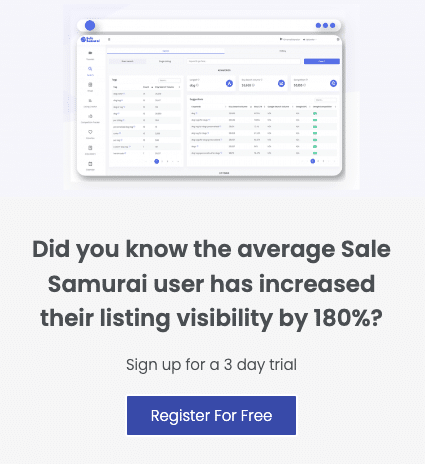
Over the past 16 years, Etsy has grown into a global online marketplace. It boasts 20 million individual shoppers, 60 million items and total sales of nearly $4 billion in 2018. Although many people who sell on Etsy have chosen it as a side gig, around 26% of sellers run their Etsy shops as full-time businesses. If you’re someone who’d like to join the top brass, you need to know how to turn your hobby into a business.
But first, we have to discuss the advantages and disadvantages of selling on Etsy.
Pros and Cons Of Selling On Etsy

Ideal for handmade and vintage items, as well as craft supplies, Etsy is not only a global online marketplace, but also a search engine. And so, it takes skills to be able to take advantage of the millions of shoppers on it. When you join Etsy, you’ll soon realize that it’s been designed in a very intuitive way, with an emphasis on making sales. Here’s why:
Pros
It is super easy to use: You can set up your shop in just a few minutes with a few clicks. It’s easy to navigate both for sellers and buyers.
It has the lowest overhead and fees: When you do a fee comparison with other platforms, you’ll find that Etsy has the best terms. It costs $0.20 to list an item. As for sales, Etsy takes a 5% cut of the total price (including shipping). Added to the fact that there are no membership fees either, Etsy is therefore highly affordable.
It generates a lot of traffic: In 2020, Etsy had two million buyers and the company invested a significant amount of money into advertising the platform. It’s also highly trusted by both customers and sellers.
Analytics: Etsy’s analytics tools are free and they offer insights into how many people have viewed your shop, which items they saw, the phrases that they used to find your shop, how much you’ve made, conversion rates, and more.
Free promotional tools: This does not refer to Etsy’s paid ads but rather the fact that you can run sales and offer coupon codes. The latter can be used to send “thank yous” to customers who’ve already purchased from you in an effort to entice them back to your shop. There’s also the ability to send codes to customers who’ve hearted your products as well as the ability to add a coupon code to abandoned carts to help customers complete a sale.
VAT is taken care of for you: this is not limited to the US but across multiple countries. VAT is paid by the buyer when they make a purchase. Etsy adds VAT, collects it and pays it to the authorities for you.
Cons
The marketplace is saturated: with so many sellers seeking to compete with the rest, Etsy has become a crowded space. Getting noticed has never been as challenging. However, it’s not impossible.
Loss of shop identity: when a buyer purchases something from your shop and they tell their friends about it, they won’t say they got it from you but from Etsy. Therefore, credit is given to the marketplace and not the seller.
Shop suggestions: Etsy suggests other people’s shops at the bottom of your shops which means that you can ultimately lose customers.
Free shipping: Etsy tends to push free shipping whether you can afford it or not and listings that offer free shipping will get a boost in search. This has forced sellers to push the cost of shipping in the listing price, alternatively, they are forced to pay shipping on their own only to make a loss.
Fees can be confusing: although Etsy’s fees are low and competitive, they are also numerous and really add up.
Offsite ads: this category of ads applies to those who earn $10,000 a year or more from selling on Etsy. What Etsy does with these stores is to take them off site to advertise but you can neither opt out nor can you choose which products or how many are advertised, all at a sizable commission taken by the marketplace.
Top Tips on How to Start an Etsy Store and Start Making Sales

Despite some of the cons, Etsy makes a lot of financial sense and it’s worthwhile to get started. It’s a business building tool that’s highly affordable, so if you’re thinking of turning your hobby into a full-time job, Etsy is the ideal platform for you.
Here are some of the top tips and best practices for getting started with Etsy and building your business into a profitable venture.
1. Create your products: A good tip when you’re just getting started is to create a few products before you even think of getting started on Etsy. This is because you’ll have a better idea of how much time, effort and raw materials are required to create each one. Doing product testing with friends and acquaintances before you start is a great way of testing the market before launch. Another tip is to ensure that all your envelopes or boxes for shipping are at hand, thus eliminating possible delays in shipping time.
2. Come up with a shop name: Your shop name should be related to the products you’re going to be selling (and your business values) so that you are more easily findable. If you’re unsure of this step and it’s taking you some time to think of a name, don’t worry. Not only is your shop name free, but you can also rebrand at a later stage. To start, make sure it’s easy to remember, keep it between four and 20 characters long, don’t include spaces or special characters, do not use a name already used by another seller, don’t infringe on trademarks, and of course, don’t use profanities.
3. Create a memorable brand: This will happen when you start personalizing your shop page. You need to consider creating banners, a Profile page, an About us page, a Frequently Asked Questions (FAQ) page, and more.
4. Take photos of your products: This step is key as the visual element is one of the key factors which your customers take into account when purchasing. Although Etsy recommends that you use at least five photos per item, you have a maximum of 10 to work with.
5. Add items to your shop: This will include uploading your beautiful photos and providing a title for your product. You’ve got a 140-character limit to work with so make sure you use it optimally. But that’s not all you have to think about.
You will also be able to provide an in-depth description, a bulleted overview as well as additional details of the product’s category and type. Regarding your description, just remember that your customers want to know what they’re getting. The more detailed and thorough it is, the better for you and your business. Information you should consider including: more details about the product, your returns policy, contact details, how they’ll receive the product, shipping information, the time it takes to create the products, what to do in the event of delays and more.
There are a total of 13 tags for you to use and you should ensure you use each one optimally in order to get found more easily. After all, Etsy is also a search engine and you need to make sure you’re using the keywords your customers are using.
Finally, use product variations to describe the different sizes and colors you’re offering your customers.
6. Price your products: when you price your products, it’s crucial to keep in mind the fact that Etsy encourages free shipping and if you opt for this, you’ll need to factor in your total product price which includes your shipping costs. Also consider transaction fees and payment processing fees to ensure you don’t under or over-price.
7. Payment preferences: you will need to choose your payment preferences out of several options and then set up billing. Something else to remember is to open a separate bank account that’s specifically targeted at your new business. Keeping your personal and professional income separate will help you manage your sales and you’ll be able to take a look at your income and sales at a glance as opposed to sifting through a bank statement that contains a mix of your personal income, too.
8. Publish your listing: it’s important to note that your listings will not go live until you finish the setup process. That’s why it’s a good idea to spend a bit of time on a few listings as opposed to many to help you get started. You can always come back and edit later.
9. Spread the word: this is where social media like Pinterest, Facebook and Instagram come in. You need to get outside the Etsy platform to become more visible. The rule of thumb is the more social media platforms your business is on, the more customers you’re likely to reach.
10. Next steps: make sure your customer service puts your customers first. This is more likely to make you a trusted brand with more and higher reviews. In addition, it’s crucial to remain flexible as your business evolves and you need to be ready to evolve with it.
Etsy & Sale Samurai
![]()
If keywords, pricing, and competition are uncharted territory for you, you’ll need a business intelligence tool to help you beat the competition. Your new best friend is Sale Samurai. And here’s why:
- Find high volume, actionable keywords which your competition can’t see
- Research, filter, analyze and download Etsy’s search results seamlessly
- Learn from the best on Etsy – figuring out what it takes to stand out
- Automate scaling your business so that you evolve with it at the right pace
Grab your Sale Samurai free trial today and see how we can help!
Did you know the average Sale Samurai user has increased their listing visibility by 180%?
Sale Samurai Team
Sale Samurai is your all-in-one tool for massive Etsy growth. With thousands of users and years of e-commerce experience, Sale Samurai is built by sellers with the data and analytics in mind that you need for a successful Etsy shop. Start with a free account to explore how Sale Samurai can help expand your business today.
- Instagram vs. TikTok vs. YouTube: Which Platform Is Best for Promoting Your Etsy Shop?
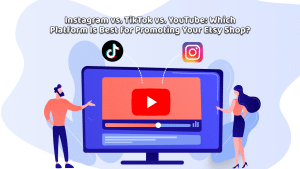
- How to Use Instagram Influencers to Promote Your Etsy Shop with Sale Samurai
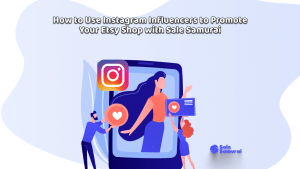
- How to Use TikTok to Market Your Etsy Shop and Increase Sales
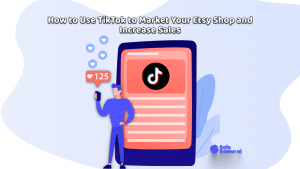
- How to Use YouTube Influencers to Promote Your Etsy Shop with Sale Samurai
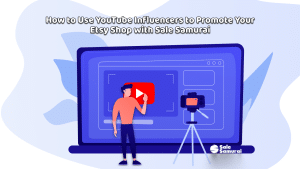
- Spring into Sales: Seasonal Trends to Watch for in 2025

